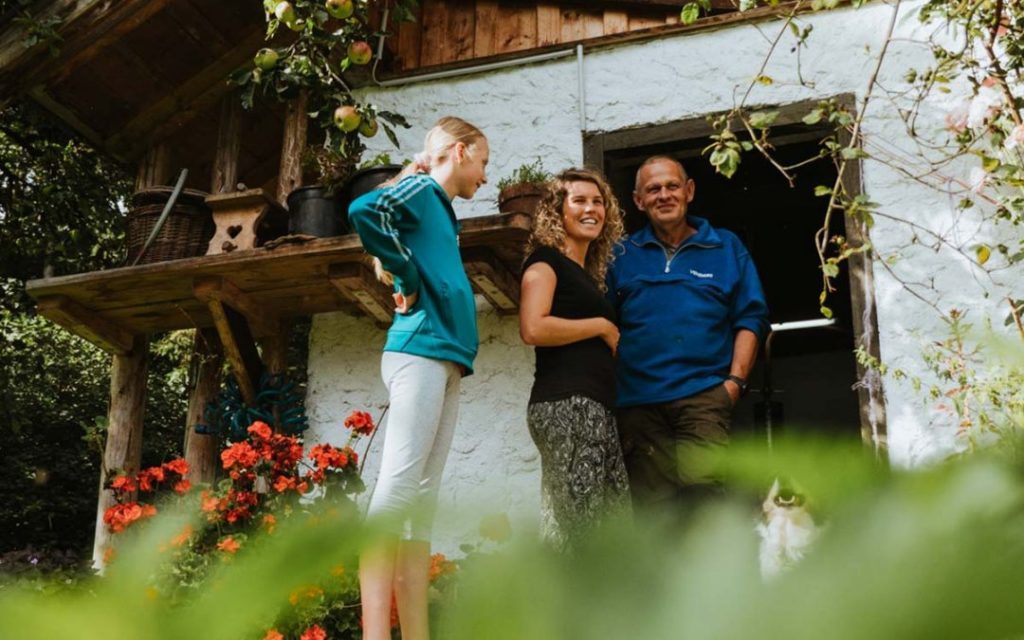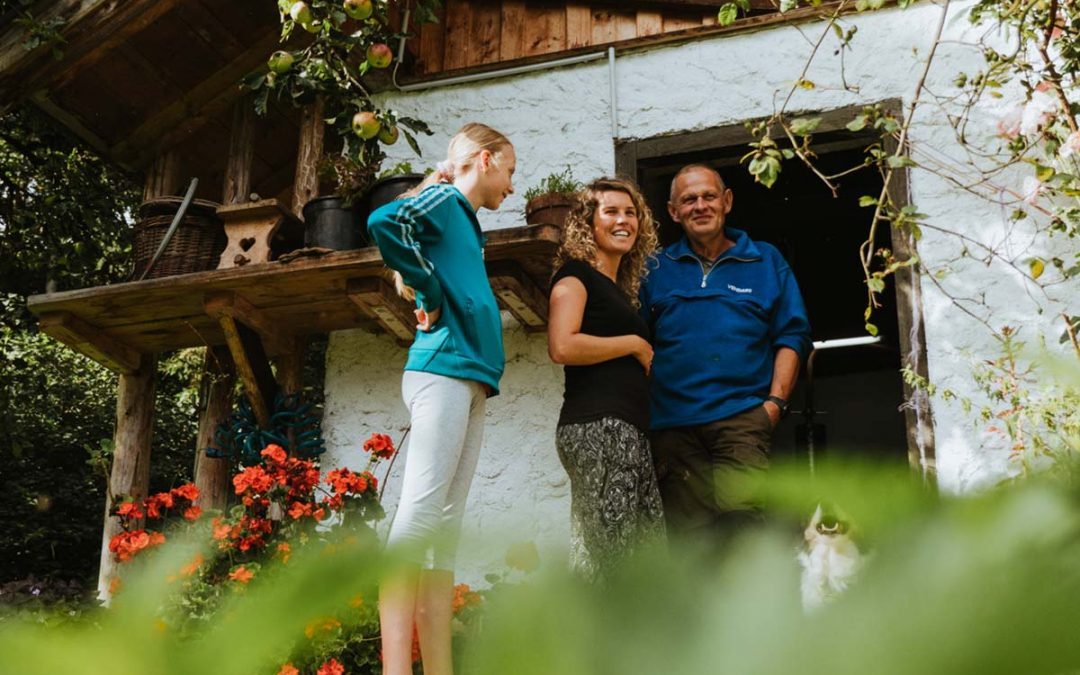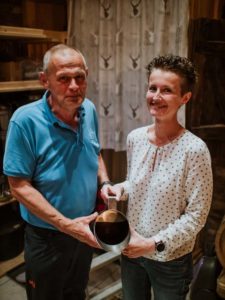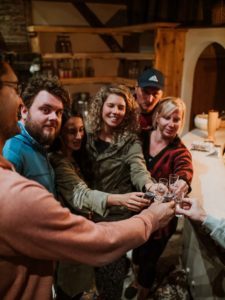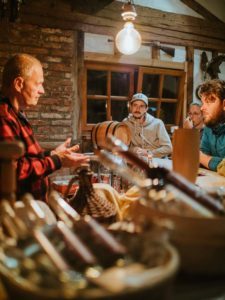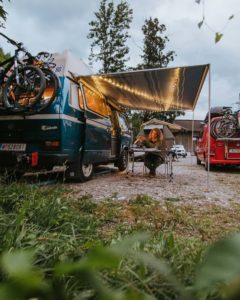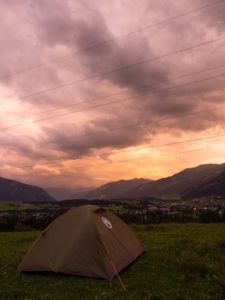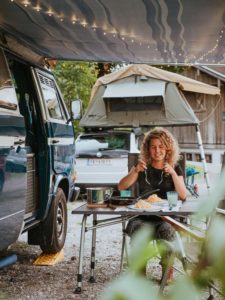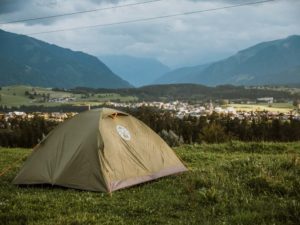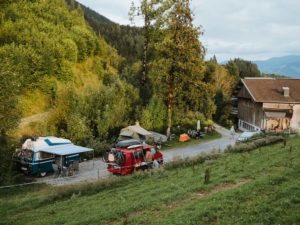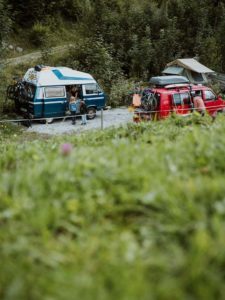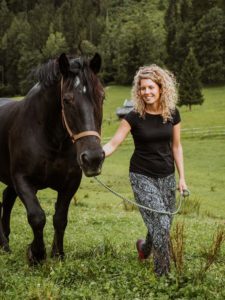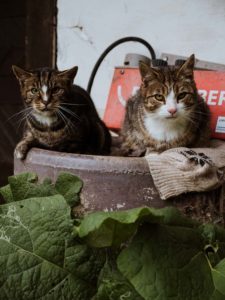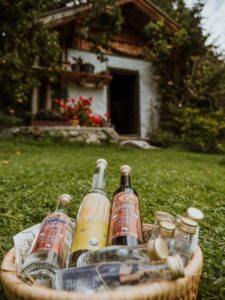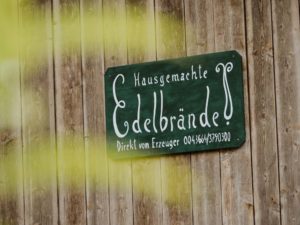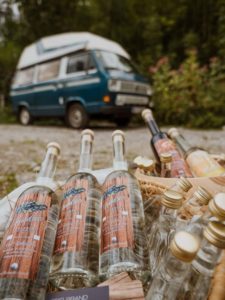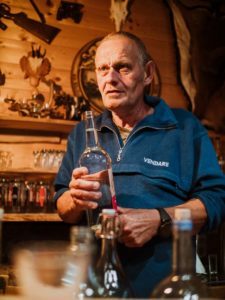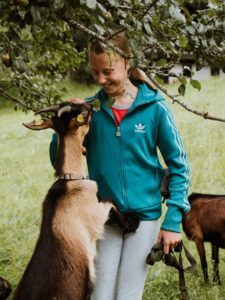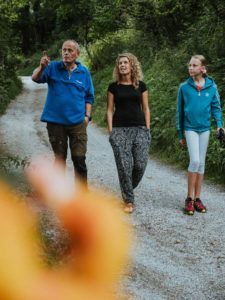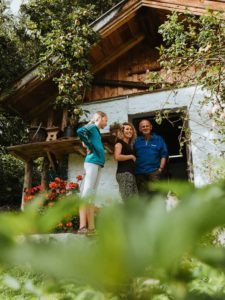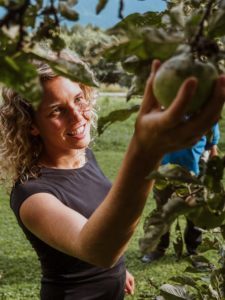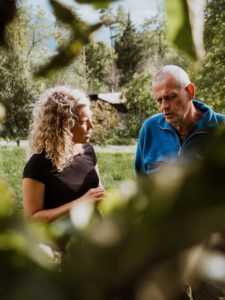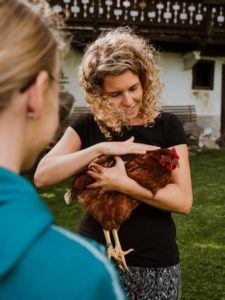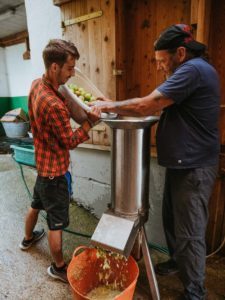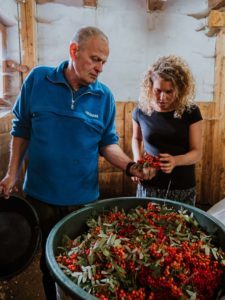The world of fine spirits
Fritz Zehentmayr stands in the cosy parlour of his farm and holds a small glass of amber liquid up to the light: "Do you see the streaks on the glass? That's how you recognise it!" We also swirl our glasses, the oily film is clearly visible. We have recently come to know: These are essential oils, a sign of quality. "You can distinguish noble brandy from simple schnapps by these streaks!
Schnapps, that's often the first association when you think of high-proof spirits made from pears, apples or rowan berries. Fritz doesn't like to hear the word. Because on his farm he distils only fine spirits - and the finest drops at that. We can see this for ourselves in the coming hours.
We - that's a colourful bunch of people who have gathered in the parlour at Gut Hinterlehen in Saalfelden in southern Salzburg: A family of four with a red camper, two couples with a car and roof tent, another with a classic tent - and of course Regina and I with our blue Bulli Edelweiss. We all have over Schau aufs Land found a free pitch on the farm today, in a wonderful location between the edge of the forest and the paddock.
Another extra is the noble brandy tasting. Although Fritz doesn't like to hear that either, he prefers to call it a noble brandy seminar. And that's a better description, because you learn a lot. For example, that Fritz is already running the farm together with his sister in the 5th generation to exercise the age-old, inherited large "Maria Theresien distilling right" here. That the way he distils still dates back to the Middle Ages and consists of - instead of the usual one - two distilling processes. That good noble brandy must mature for at least three years and that some varieties owe their special aroma to oak barrels. And that 100 % of the alcohol in Edelbrand is produced from the mashed fruit, i.e. nothing is added to it. That, too, is an essential difference to schnapps, as we learn from Fritz.
During a tour of the farm a few hours earlier, we were allowed to visit the distillation chamber and orchard. The fruit for a total of 23 types of brandy at Gut Hinterlehen comes exclusively from the estate's own cultivation - and is harvested and sorted by hand every year. Because only good and ripe fruits ensure that the spirits can later develop their full flavour. And also later in the distillery, a great deal of tact is necessary. "No two distilling processes are the same, I still learn something new every year," Fritz emphasises.
The trained market farmer and forester has been involved in the art of distilling since his youth. He produced his first own vintage at the age of 20: A rowanberry brandy. Even today, he keeps a few bottles of it in his cellar. "For a very special occasion."
The fact that there have recently been vans and tents on the grounds of the master distiller alongside fruit trees is pure coincidence. "My wife, Evelyn, came across this on the internet. Schau aufs Land attention. That was the best thing that could have happened to us." As a direct marketer, Fritz depends on walk-in customers. And campers are also usually interesting people; he still has contact with many of his guests. "We have only had positive experiences so far.
After a few tastings, we finally identified our favourite brandy (Zwetschke, 43 %, matured for three years in oak barrels) and it's time to return to the van. It's already dark outside and we can already feel the noble brandies a little. On the doorstep, Fritz smiles and hands us a box of freshly laid eggs. "Tomorrow you can look forward to a hearty breakfast.
Images © Thomas Hadiner @edelweiss.on.the.road
